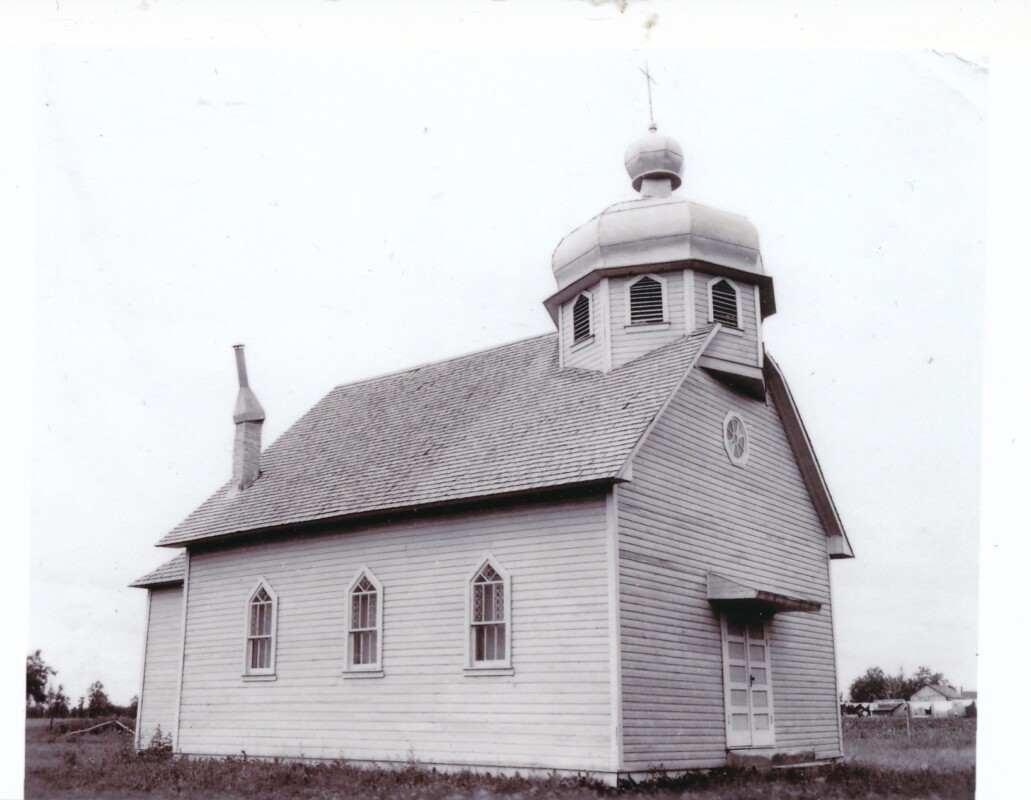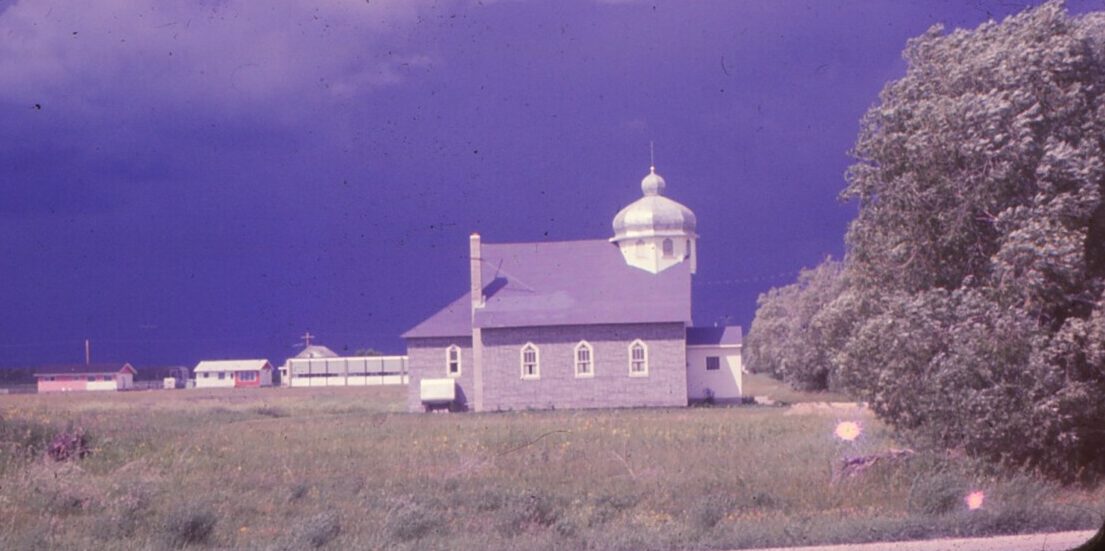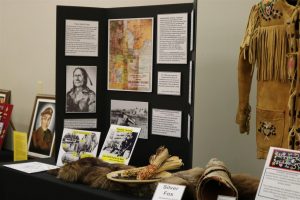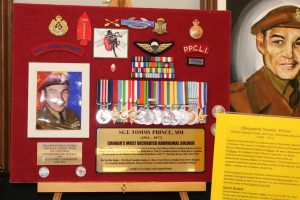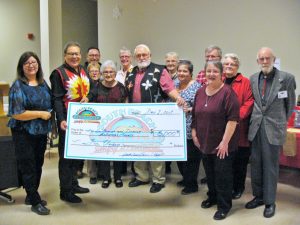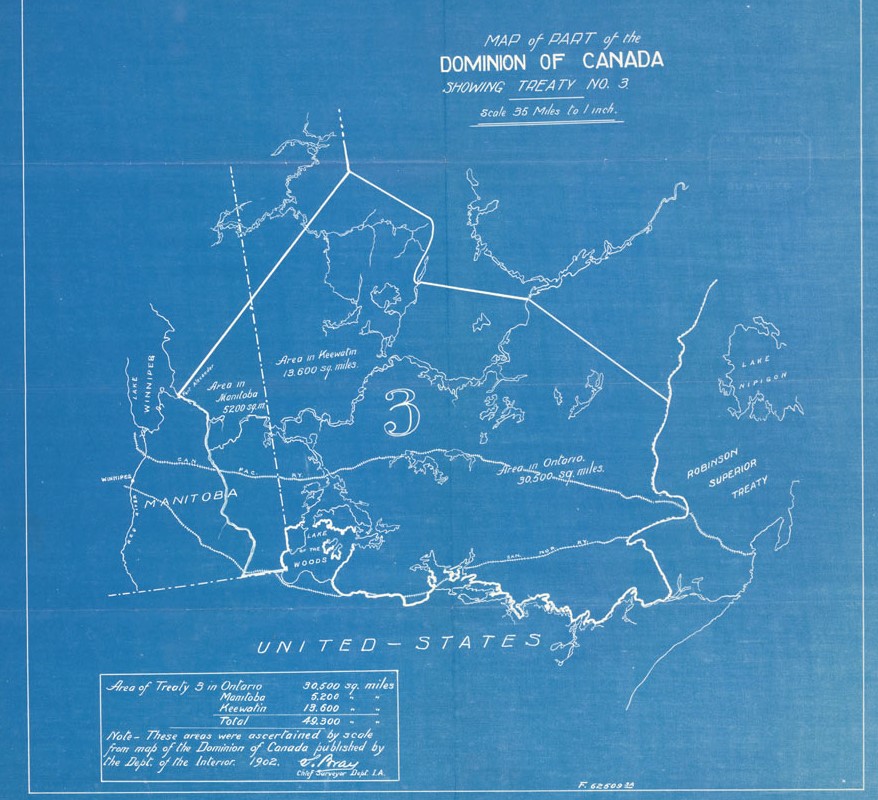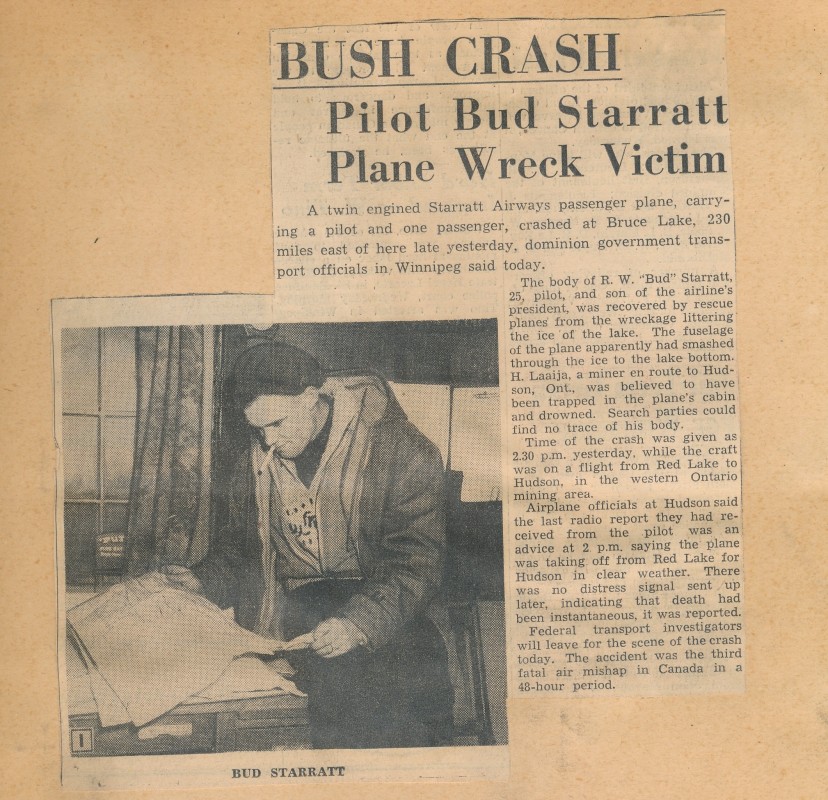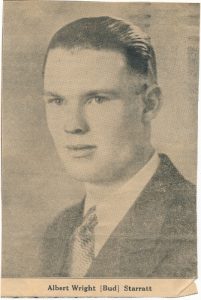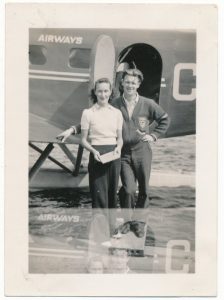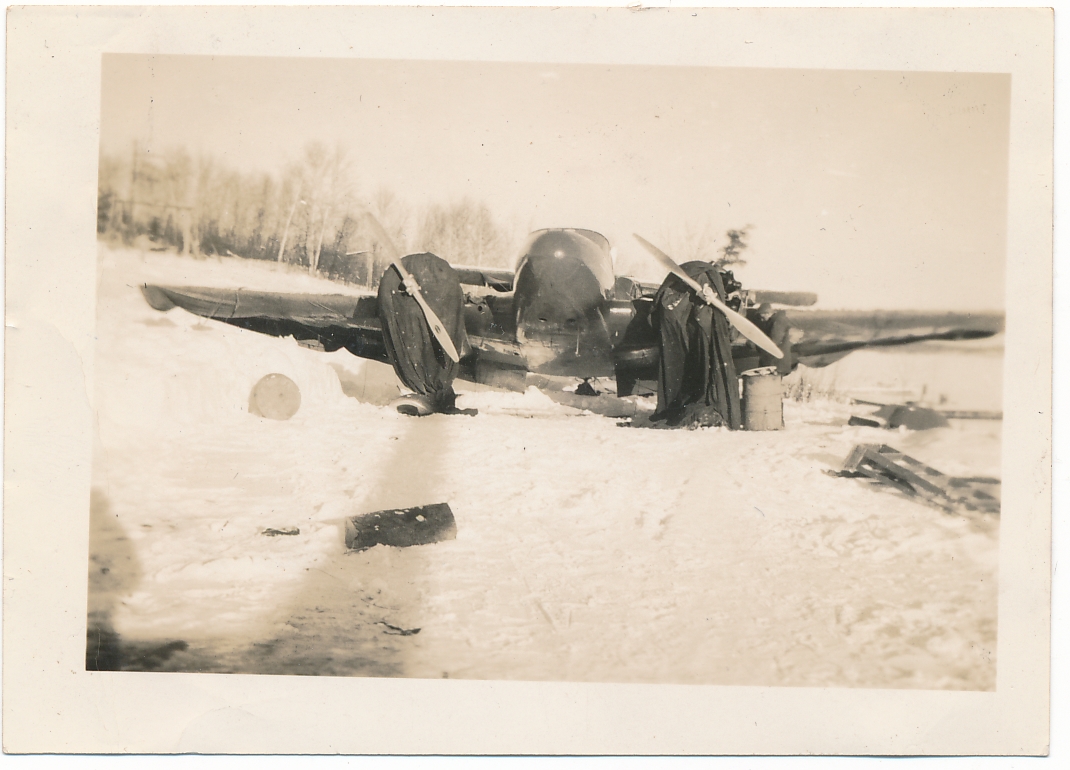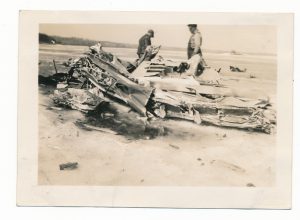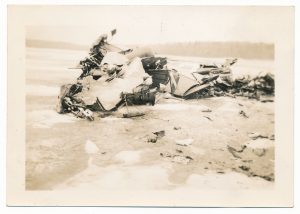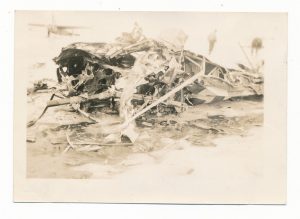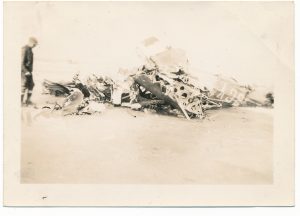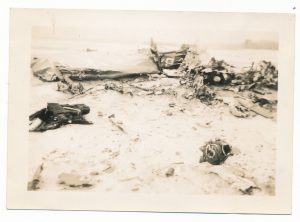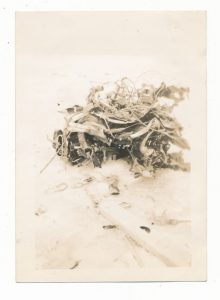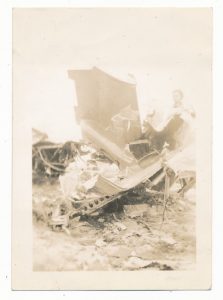Starratt Airways and Transportation 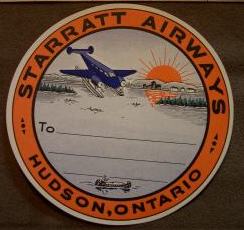
Written by Bob Starratt
All photos courtesy of Bob Starratt
Early History
Born in 1887, Robert Wright Starratt grew up in Dorchester, New Brunswick. As a young man, he ventured west in 1910 to Saskatchewan, working with the survey crew for the Grand Truck Pacific Railway. His fiancée, Iris Irving, travelled west in 1913 and they were married that year in Wakaw, Sask. When his work on the railway ended, he joined the Hudson's Bay Company freighting supplies by canoe and small boat during the summer season and horse teams in the winter. His territory encompassed Lac Laronge, Sk in the west to The Pas, Mb in the east, traversing Montreal Lake and navigating the Montreal and Saskatchewan Rivers. Iris travelled back to the east coast by train in 1916 for the birth of their first child, a son named Bud.
Soon, the young family moved further west into the Peace River country of northern Alberta. Bob broke the land and the family homesteaded there until late in 1925. While there, sons Billie, Don and Dean were born into the family. Iris returned to New Brunswick with the four children and Rob gained employment in Winnipeg during the winter, painting a hotel owned by former Peace River neighbour, Jack Grey.
Hudson History
Bob secured employment with the Hudson's Bay Company once again and was sent to Hudson, Ontario in the spring of 1926 to run their transportation interests in the Woman and Confederation Lake areas. There were 7 gold mines in production here before the first mine in Red Lake became operational. In September 1926, Iris and the four children arrived in Hudson. In 1928, Starratt, along with prospectors George and Collin Campbell, formed Northern Transportation(NT). George left the company after only 9 months but would go on to discover the Campbell gold mine in Balmertown. Mining was flourishing in the north and the company used tractor trains in winter and then bought Red Lake Transport and the Lac Seul boats of the Hudson's Bay Company. Collin Campbell, fearing it was all over with the crash of the stock market in October 1929, departed Northern Transportation leaving Starratt as the sole owner.
In 1932, NT acquired a new deHavilland 60M Moth, their first airplane, to keep in contact and monitor the progress of the tractor trains. The first pilot was the legendary bush pilot and early aviation pioneer, Harold Farrington. The company was now an all-season hauler utilizing land, air and water. In 1935, Starratt Airways and Transportation (SAT) was formed and additional aircraft were rapidly acquired. Airplanes were only part of the company with numerous boats and tractors carrying the bulk of the freight. Virtually all of the mining equipment for the Red Lake and Pickle Lake gold zones was hauled from Hudson by plane, boat or tractor train. Very quickly SAT became a dominant player in the transportation industry in Northwest Ontario. In 1939 alone, Starratt airplanes flew 12,604 passengers and 6,583,804 pounds of freight while flying over 1,000,000 airmiles. Boat and tractors hauled another 600 passengers and 34,000,000 pounds of freight. Other major contracts undertaken were a 10,000 cord pulpwood haul to the rail at Sioux Lookout, a late winter equipment haul from the rail at Savant Lake to Pickle Crow and an Ontario Hydro contract to haul cement and other supplies from Ferland on the rail to the Ogoki diversion project.
Starratt initiated the use of marine railways on the three portages between Lac Seul and Red Lake. This allowed fully loaded scows to be shuttled between the lakes rather than being unloaded and transported across portages by horses or people only to be reloaded again and again. Prior to the marine railways, this had to happen three different times before reaching Red Lake and at the tram at Ear Falls. The boat route from Hudson to Red Lake was 184 miles. Use of portages starting right out of Hudson and along the route shortened this considerably for the tractor trains.
Overall SAT had 18 airplanes in service during its 7 year existence. Some burned, some crashed and some were conscripted by the RCAF during WWII. Eight were transferred to the CPR when the company was sold in 1942.
Lac du Bonnet Connection

CF-BGY
Starratt Airways started flying regularly scheduled flights into Manitoba in January 1938 after purchasing a Beechcraft 18 twin engined aircraft, CF-BGY. BGY was the first Beech 18 on skis and floats. Initially, the flights landed at the Winnipeg airport on skis, but because the airplane was equipped with floats in the summer, a water base would have to be established. Discussions with the city of Selkirk resulted in the city constructing a dock to accept the Starratt aircraft. At this time, other airlines servicing the gold fields in NW Ontario, such as Wings Ltd and Canadian Airways, were flying into Lac du Bonnet and transporting their passengers to Winnipeg via taxi, but the Starratt fare to Winnipeg and Selkirk was lower than the others fares to Lac du Bonnet.
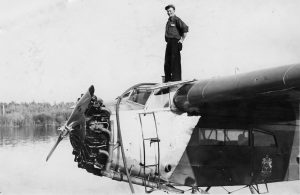
Shorty Holden
The Department of Transport ruled that they would allow Starratt Airways to continue to fly into Winnipeg and Selkirk, but they would not approve the lower rate, therefore to remain price competitive Starratt began using LdB as their Manitoba base. The base agent converted a Dodge car into a 7 passenger vehicle by removing the trunk, adding dual rear wheels and a roof baggage rack and made the taxi runs in and out of Winnipeg with this Vehicle. Shorty Holden, later a resident of Lac du Bonnet, was a pilot for Starratt Airways.
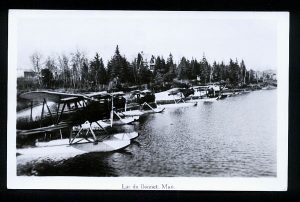
Planes at Lac du Bonnet
In 1938, the schedule was Kenora, Red Lake, Winnipeg (Winter) and Kenora, Red Lake, Lac du Bonnet (Summer). In 1939 the route was expanded and BGY was based in Hudson instead of Kenora. All days of the week but Sunday, BGY piloted by Hump Madden would fly Hudson-Sioux Lookout-Uchi Lake-Red Lake-Lac du Bonnet and returned to Hudson by the same route.
In 1940, the route expanded again and during that year Hump Madden joined the Royal Canadian Air Force and was replaced by Bud Starratt, son of the owner Robert W Starratt. Pickle Lake was added to the route and the sched became Hudson-Sioux Lookout-Pickle Lake-back to Sioux Lookout-Uchi Lake-Red Lake-Lac du Bonnet. If one of the locations on the route did not have any passengers any given day it would be bypassed.

Bud Starratt
Tragically in January 1941, on the return flight from Lac du Bonnet via Red Lake, Bud Starratt was overcome by carbon monoxide poisoning and BGY crashed onto the ice on Bruce Lake near Ear Falls. Bud and the lone passenger were killed, the only fatalities ever suffered by the airline. Starratt Airways rented another Beech 18, CF-BQG, and continued to fly into Lac du Bonnet until the company was sold to Canadian Pacific Railways. The name Starratt Airways was used by CPR for a few years and then along with similar feeder airlines in the country were eventually joined together to form Canadian Pacific Airlines, Canada's second national airline.
Starratt The Man
RW Starratt was a very benevolent person while living in Hudson. Missionaries of all denominations were flown free of charge to do their ministering. Trappers and miners were looked in on by air and toys were delivered gratis to Indian Reserves and isolated communities. In 1939, 72 school children and their chaperones from Red Lake were barged from Red Lake, over the portages and then the length of Lac Seul to meet the King and Queen at the railway station in Sioux Lookout, during the Royal Tour. He flew the Red Lake Wanderers hockey team to Port Arthur to compete in the semi-final of the Allen Cup without charge. During World War II, RW worked as a dollar a year man overseeing the national scrap metal collection program for the war effort.
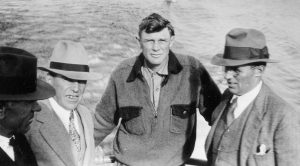
Robert W. Starratt, middle
After he left Hudson in 1942, he owned lumber mills in Spurfield, Alberta and then for many years the Canyon Creek Sawmill in Valemount, BC. He wintered in Hollywood, Florida and spent the summers in Valemount. In 1967, he passed away in Florida at the age of 80. If you are travelling highway 16 west of Jasper and through Valemount you will see a sign on the highway at the west end of town stating "Robert W Starratt Wildlife Sanctuary." After Starratt’s death, his sons Don and Dean donated 600 acres of Bob Starratt's wetland property to the British Columbia government at this site.
Robert Starratt and his first wife Iris, along with the remains of his sons Bud and Billie (killed as a teen in a shooting accident), are interred in the Elmwood Cemetery in Winnipeg.

